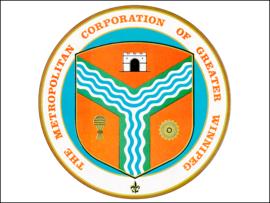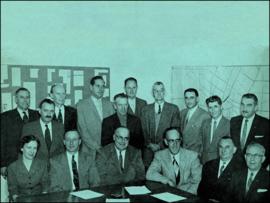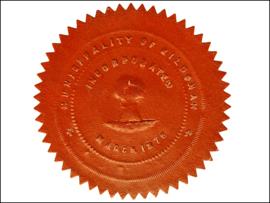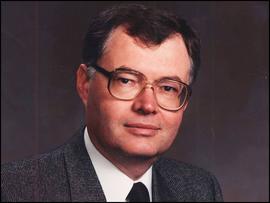- Person
- 1870-1947
William Smaill was born in Montréal in 1870 and was educated as a chemist and a civil engineer. In 1892, Smaill was living in Acadian Mines, Nova Scotia, but briefly returned to Montréal to marry Jane Robinson Batt, who was from Ireland. In 1894, they had a son, William Hubert, and a daughter, Margaret Kathleen, in 1896. Shortly after this, Smaill and his family moved to Rat Portage (now Kenora), where he worked as a mining engineer and had two more children: Elsie in 1899 and Carlton in 1901.
Smaill was involved in the construction of the Winnipeg Aqueduct that transports safe drinking water from Shoal Lake to Winnipeg. Preliminary work for the aqueduct began in 1914 and included the building of the Greater Winnipeg Water District Railway and the Falcon River Diversion that diverted the waters of Falcon River, which had an unwanted colour, to Snowshoe Bay. The diversion solved the problem of unwanted colouration of the water supply, but had the effect of limiting Kekekoziibii Shoal Lake 40 First Nation's access to the mainland. In September 1914, contracts were awarded to various companies to build portions of the aqueduct. The Northern Construction Company and the Carter Halls Aldinger Company made a joint bid and were awarded contracts 32, 33, and 34 to build over 47 miles of the aqueduct between Indian Bay and the Whitemouth River. The Winnipeg Aqueduct Construction Company, a conglomerate of Northern Construction and Carter Halls Aldiner, was incorporated in January 1915. William Smaill served as the new company’s superintendent, overseeing the construction of its portion of the aqueduct. The aqueduct was completed in March 1919.
Smaill took many photographs of the construction process and believed photography could be used as an engineering tool. He gave a paper to a University of Manitoba engineering class in 1918 titled, “The Uses of the Camera in Engineering Work”. He wrote several other papers on the aqueduct’s construction, including articles for the Excavating Engineer (1915 and 1917) out of Milwaukee, Wisconsin, and the Engineer News Records (1917), out of New York City.
Smaill and his family lived in several places while construction of the aqueduct was underway. These places included Reynolds, Manitoba, the Rural Municipality of Springfield, Manitoba, as well as various camps along the aqueduct’s construction route. Shortly after the aqueduct’s completion, Smaill and his wife moved to Vancouver, British Columbia, where he was involved in the construction of the Ballantyne Pier and the Second Narrows Bridge. Smaill’s son, William Hubert, also an engineer, served in the First World War as a sapper from 1916 to 1918. Smaill’s other son, Carlton, died in 1921. Smaill passed away in Vancouver in 1947.


















